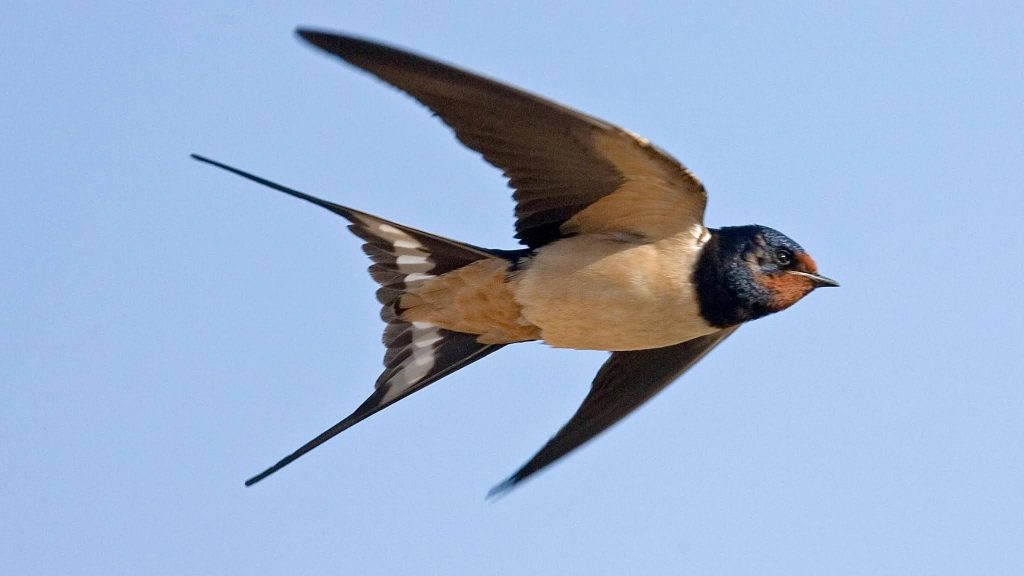
One of the great things about owning a barn in the Midwest is that every spring and summer it becomes a home for barn swallows.
These strikingly beautiful visitors are endowed with navy blue backs, cream-colored undersides, a dab of orange under the beak, and distinctive forked tails. They build their nests high up in the rafters of buildings and barns, utilizing mud, feathers, twigs, horsehair, and anything else within reach.
Each adult consumes somewhere between 1,000 and 3,000 flying insects (chiefly mosquitoes) every day. Therefore the swallows that nest in our barn are also known as Our Very Best Friends.
Every year they arrive in central Indiana within a few days of April 13. Without Google Maps, GPS, or a Rand McNally atlas, they somehow find their way back to our property. By summer’s end they head south.
Where exactly do they go? Incredibly, ornithologists have discovered that barn swallows fly back and forth, year after year, between the Northern and Southern Hemispheres. Most of them will winter in southern Brazil or Argentina. It’s estimated that an adult swallow may fly up to two million miles during its lifetime.
Last summer there were a dozen active nests in our barn, with 4-5 chicks per nest. About three weeks after hatching, the baby swallows perch on the edge of their tiny mud nurseries and prepare for their first test flights. Without ever going to school, they seem to know exactly what to do.
And next April 13, relying on teamwork and a built-in guidance system that defies comprehension, they will be return. How is this possible?
Actually, most human parents find themselves wrestling with a different question: What do my kids need to know before they leave the nest?
Our little ones are not as pre-programmed as swallows. After three weeks, three years, or even three decades, it’s evident they still have plenty to learn.
Human children, in fact, are in a continual learning mode. Our kids have to master colors, numbers, shapes, and letters. They must work hard to learn how to read, brush their teeth, tie their shoes, ride their bikes, make their beds, balance equations, find Argentina on a map, parallel park, and ask someone out on a date.
Then there are the skills of table manners, saving money, delaying gratification, resolving conflicts, surviving a broken heart, working for a psychotic boss, and keeping their bodies in sufficiently good shape to flourish for the next 80 years.
Most challenging of all, our children have to learn how to seek out purpose and meaning in life. How to choose character, integrity, honesty, and grace over fear and selfishness. How to discern the reality of God in the midst of daily life. And how to deal with pain, suffering, and injustice.
In other words, they must learn how to keep going whenever they feel like giving up.
Compared to barn swallows, why does it take so long to raise a human child? There’s so much worth knowing. And so much worth getting right.
Deuteronomy 6:4-9 is one of the most treasured texts of ancient Judaism:
“Hear, O Israel: The Lord our God, the Lord is one. Love the Lord your God with all your heart and with all your soul and with all your strength. These commandments that I give you today are to be on your hearts. Impress them on your children. Talk about them when you sit at home and when you walk along the road, when you lie down and when you get up. Tie them as symbols on your hands and bind them on your foreheads. Write them on the doorframes of your houses and on your gates.”
The Bible pictures our homes as places where experiences of learning never come to an end, and where ordinary people can grow up to do extraordinary things.
We may not get to teach our children how to fly.
But by God’s grace we do get to teach them how to soar.
